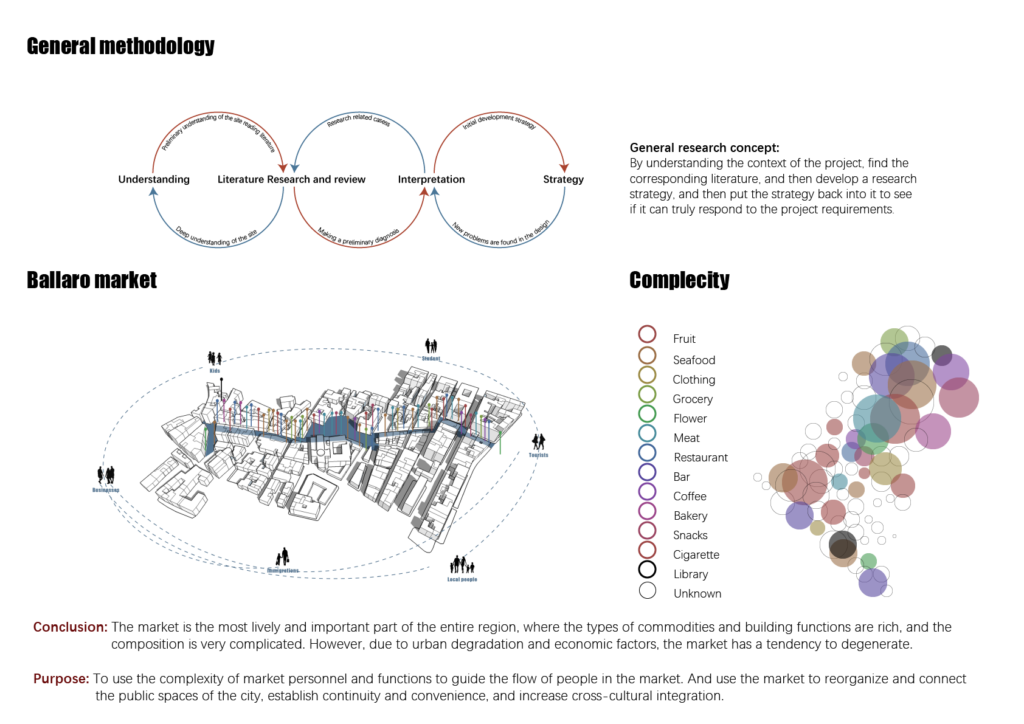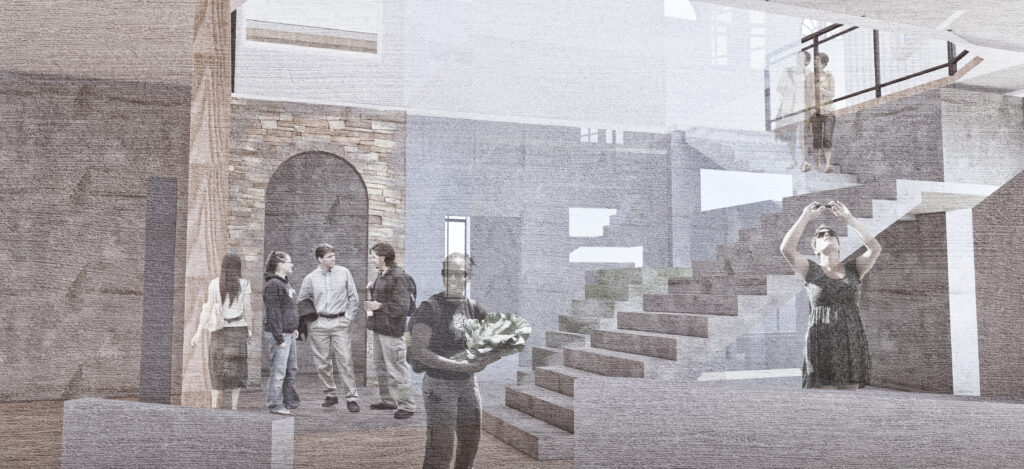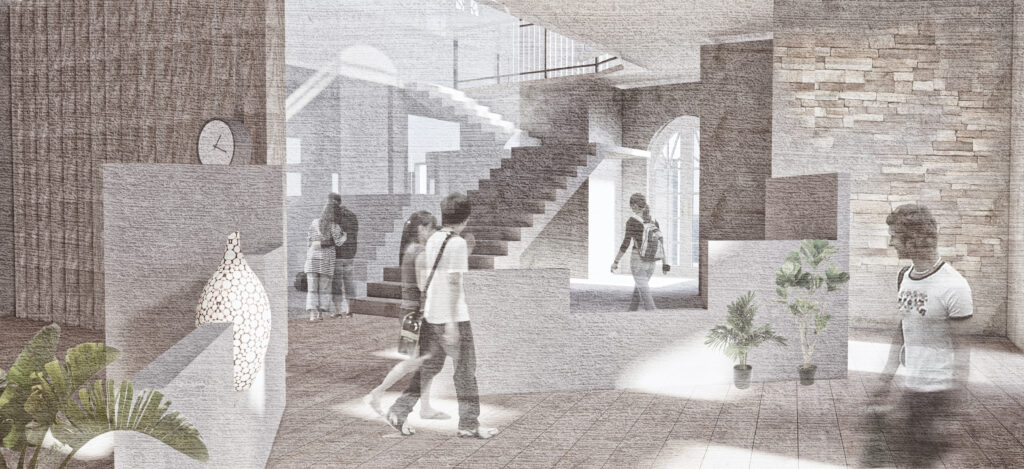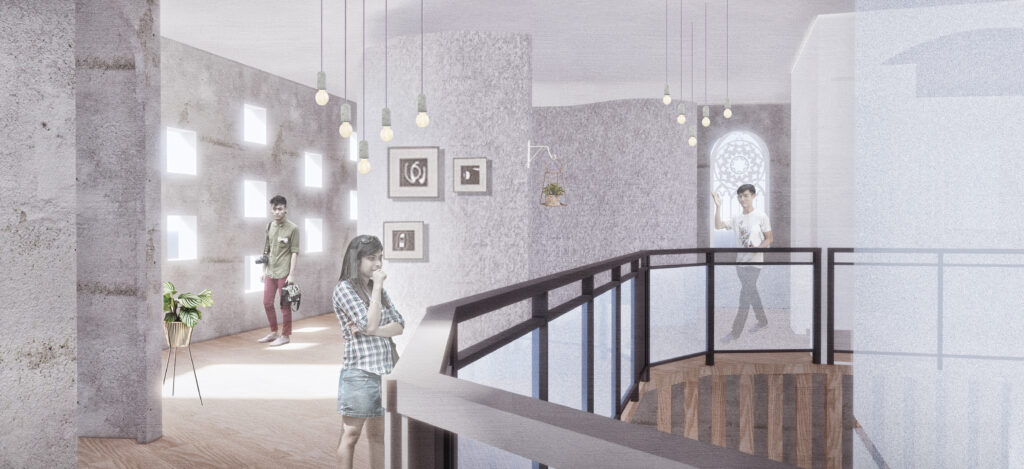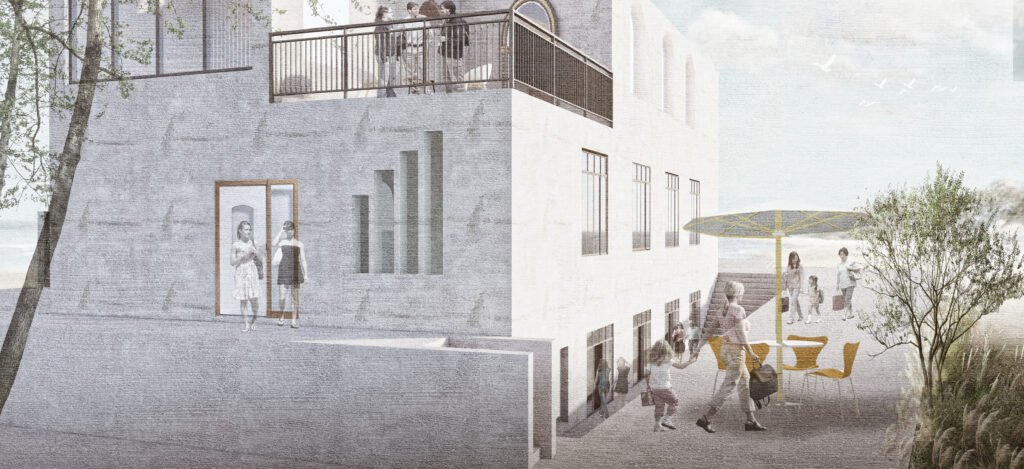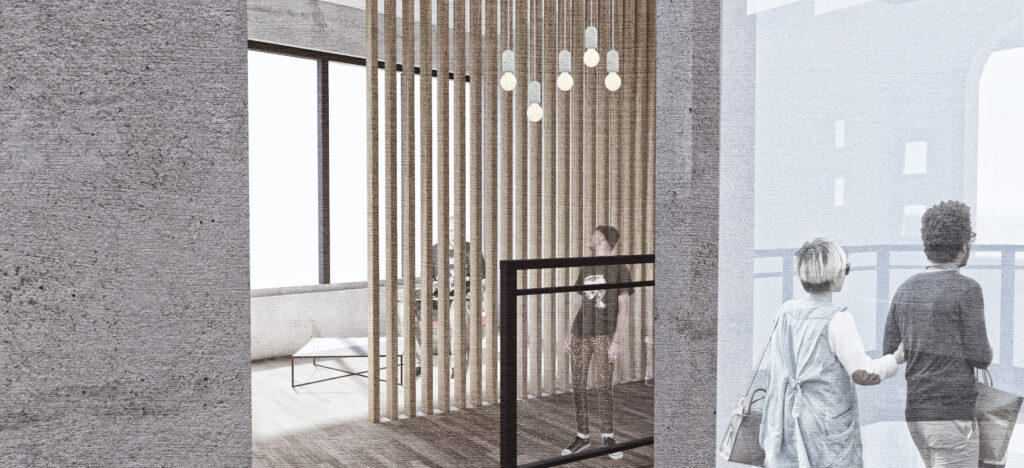Introduction
Through the analysis of the local urban background and cultural conditions, more cities and architectural spaces are opened to improve people’s cognition and understanding of culture and to strengthen the integration and exchange of different local cultures, thereby creating intercultural opportunities.
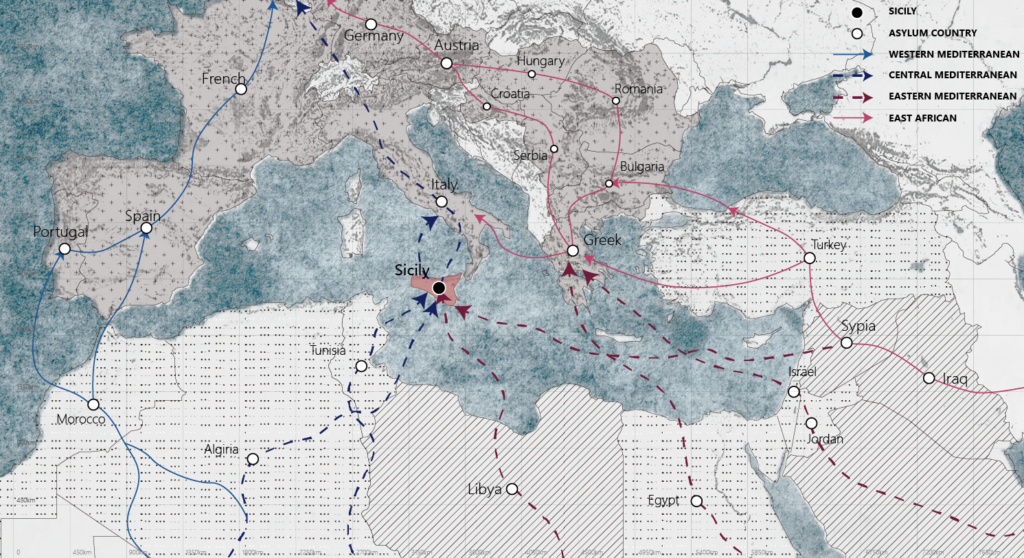
The intervention site locates in Palermo, the capital of Sicily, Italy. The entire city has a very complex background, a long history and culture, continuous political changes, and diverse religions. And the problems of refugees and immigrants in the context of Europe have brought new challenges and opportunities to the city. Through two field investigations and literature review, we have re-understood and pondered the public space and architecture in Albergheria area from different perspectives. The project is ground on the third space, explore whether the space nodes can effectively increase the opportunities for people to meet and communicate, and create and awaken people’s collective memory of the city’s history.
My project is a Palace of Palazzo Giallongo, which still preserves the remains of the 18th century. Now there are many kinds of heritage inside the building, such as details carved on the main wall, frescoes, remaining stone walls, and some internal stairs. These all show people’s choice and expectation of building materials in history and life and the level of craftsmanship at that time. Therefore, I kept and reconstructed these elements in the new building, trying to bring history and culture into people’s vision, arouse people’s interest and memory and resonance, to improve people’s tolerance and identity for different cultures. By reusing and interpreting public space, creating different space nodes inside the building, reducing people’s sense of distance and strangeness in the open space, increasing the chance of meeting people, and finally achieving the purpose of intercultural integration.
